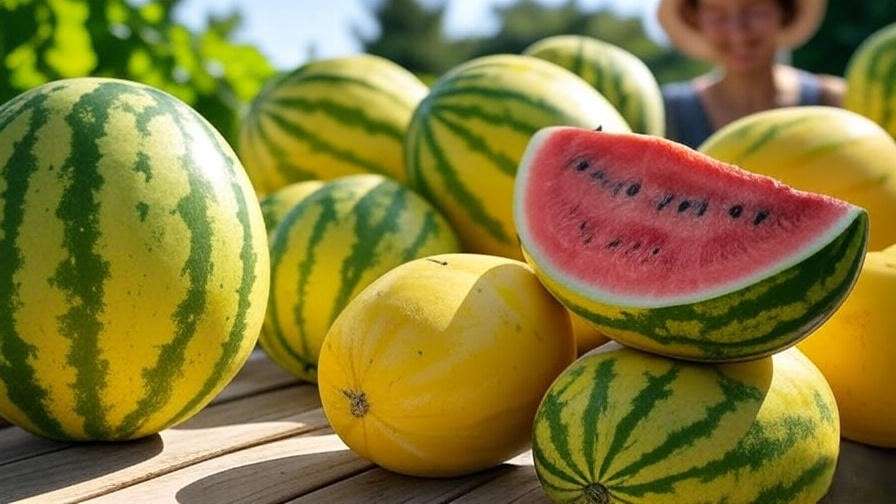Imagine slicing into a juicy, golden-fleshed watermelon, its vibrant hue lighting up your summer table. If you’re a gardener dreaming of this sweet, eye-catching fruit, watermelon yellow seeds are your ticket to success! These unique seeds are gaining popularity among plant enthusiasts for their ability to produce delicious, visually stunning yellow watermelons. Whether you’re a seasoned grower or a beginner, this guide will unlock the secrets to cultivating thriving yellow watermelon plants. Backed by decades of horticultural expertise and insights from top agricultural institutions, we’ll walk you through everything you need to know to grow these vibrant melons with confidence. Ready to transform your garden? Let’s dive in! 🌿
H2: What Are Watermelon Yellow Seeds? 🌼
H3: Understanding Yellow Watermelon Varieties
Yellow watermelons, unlike their red-fleshed cousins, boast a golden interior that’s often sweeter and less seedy. Varieties like Yellow Crimson, Yellow Doll, and Orchid Sweet are favorites among gardeners for their compact size and rich flavor. These melons typically weigh 5–20 pounds, making them ideal for small gardens or container growing. The seeds themselves are distinct—often pale yellow or cream-colored—reflecting the unique genetics of these hybrid or heirloom cultivars. Their rise in popularity stems from their aesthetic appeal and culinary versatility, perfect for salads, smoothies, or simply enjoying fresh.
H3: The Science Behind Yellow Seeds 🧬
Yellow watermelon seeds result from selective breeding or hybridization to enhance the golden flesh trait. According to research from Cornell University’s Plant Breeding Program, the yellow color comes from a recessive gene that alters carotenoid production, giving the fruit its vibrant hue. These seeds have similar germination rates (70–90%) to standard watermelon seeds when stored properly, but their success depends on high-quality sourcing. Understanding seed genetics helps gardeners choose reliable seeds for optimal growth. For example, hybrid seeds may yield uniform melons, while heirloom varieties offer unique flavors but require careful pollination to maintain purity.
H2: Benefits of Growing Watermelon Yellow Seeds 🌟
H3: Nutritional and Aesthetic Advantages
Yellow watermelons are a nutritional powerhouse, packed with vitamins A and C, antioxidants, and hydration-friendly water content (up to 92%). Their lower seed count makes them a favorite for families and chefs alike. Aesthetically, their golden flesh adds a pop of color to dishes, elevating everything from summer salads to tropical sorbets. According to a 2023 study by the University of California, Davis, yellow watermelons contain slightly higher beta-carotene levels than red varieties, offering an extra health boost. Their vibrant appearance also makes them a standout in garden beds or farmers’ market displays.
H3: Market Demand and Gardening Appeal
The demand for yellow watermelons is soaring, with posts on X highlighting their popularity at local markets and among home gardeners. Their compact size suits urban gardens, and many varieties thrive in containers, making them accessible to beginners. Gardeners love their shorter growing season (60–90 days), which allows for quicker harvests compared to larger red watermelons. Plus, their unique color draws attention, making them a conversation starter. Whether you’re growing for personal enjoyment or to sell, yellow watermelons offer a rewarding blend of beauty and practicality.
H2: How to Choose High-Quality Watermelon Yellow Seeds 🛒
H3: Where to Source Authentic Seeds
To ensure success, source your watermelon yellow seeds from reputable suppliers like Burpee, Johnny’s Selected Seeds, or Baker Creek Heirloom Seeds. These companies offer organic and heirloom options with guaranteed germination rates. Avoid generic seed packets from unverified sellers, as they may contain low-quality or mislabeled seeds. Check reviews on gardening forums or X posts to confirm supplier reliability. For example, a 2025 X thread praised Johnny’s Yellow Doll seeds for their consistent germination and flavor. Opt for certified organic seeds if sustainability is a priority.
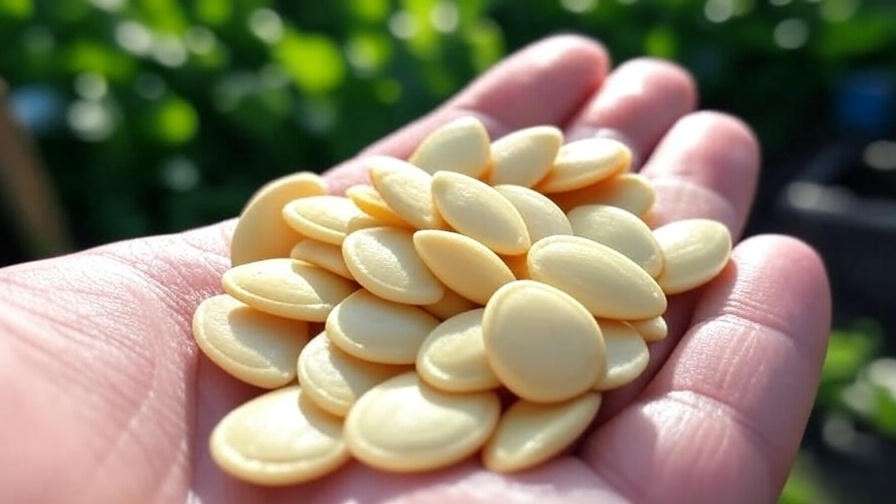
H3: What to Look for in Seed Quality
High-quality seeds are plump, uniformly colored (pale yellow or cream), and free from cracks or discoloration. Check the seed packet for a germination rate (ideally 80% or higher) and harvest year (within 1–2 years for best viability). Store seeds in a cool, dry place to maintain their vigor. Pro Tip: Contact the supplier for hybrid vs. heirloom details, as hybrids may require specific pollination practices, while heirlooms allow for seed saving. Always verify the seed’s origin to ensure it’s suited to your growing zone (typically USDA zones 3–9 for watermelons).
H2: Step-by-Step Guide to Growing Watermelon Yellow Seeds 🌱
H3: Preparing Your Soil and Environment
Yellow watermelons thrive in well-drained, loamy soil with a pH of 6.0–6.8. Test your soil using a home kit or send a sample to your local agricultural extension service for precise results. Amend soil with compost or aged manure to boost organic matter. Choose a sunny location with at least 6–8 hours of direct sunlight daily, as watermelons love warmth (70–85°F). For container gardening, use a 15–20-gallon pot with drainage holes. Clear weeds and add a layer of mulch to retain moisture and regulate soil temperature.
H3: Planting and Germination Tips
Sow seeds in spring after the last frost, when soil temperatures reach 70°F. Plant seeds 1 inch deep, 2–3 feet apart in rows, or in hills with 3–4 seeds per mound. For faster germination, start seeds indoors 3–4 weeks before transplanting, using biodegradable pots to avoid root disturbance. Keep soil consistently moist but not waterlogged. Expect germination within 7–10 days under optimal conditions. Common Mistake: Planting too early in cold soil can stunt growth—use a soil thermometer to confirm readiness.
H3: Caring for Young Watermelon Plants
Water young plants deeply (1–2 inches per week), preferably with drip irrigation to avoid wetting foliage. Apply a balanced fertilizer (e.g., 10-10-10) every 2–3 weeks until flowering, then switch to a phosphorus-heavy blend (5-10-10) to support fruit development. Mulch with straw or wood chips to suppress weeds and retain moisture. Protect seedlings from pests like aphids or cucumber beetles using row covers or neem oil. Expert Insight: Companion planting with marigolds or nasturtiums can naturally deter pests while adding beauty to your garden. 🐞
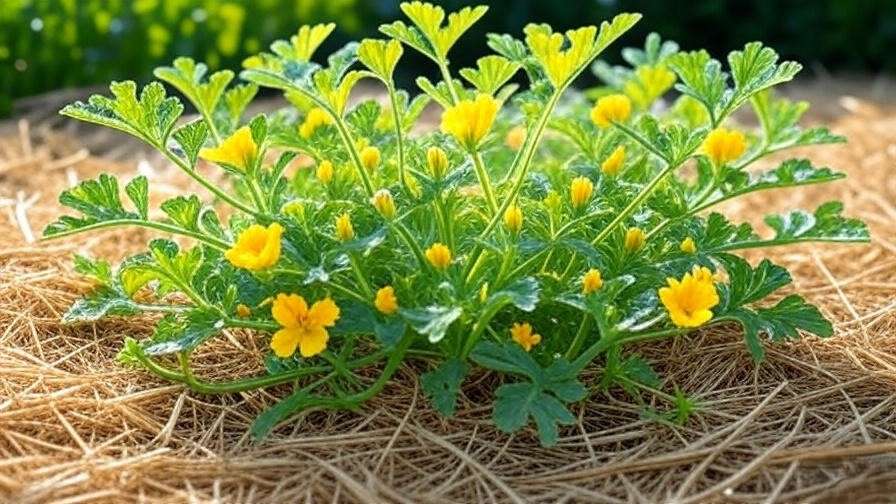
H3: Pollination and Fruit Development
Yellow watermelons rely on pollinators like bees for fruit set. Encourage pollinators by planting pollinator-friendly flowers nearby (e.g., lavender, zinnias). If bee activity is low, hand-pollinate by transferring pollen from male flowers (thin stem) to female flowers (small fruit at base) using a small brush. Each vine typically produces 2–4 melons. To prevent blossom-end rot, maintain consistent watering and ensure adequate calcium in the soil. Most yellow varieties ripen in 60–90 days, depending on climate and cultivar.
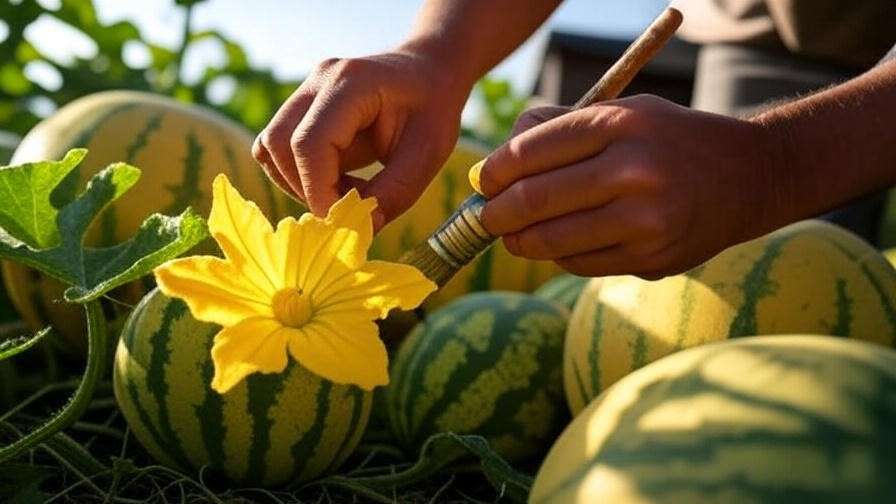
H2: Troubleshooting Common Issues with Yellow Watermelons 🚨
H3: Poor Germination Rates
Low germination can be frustrating, but it’s often preventable. Common causes include old or improperly stored seeds, cold soil, or overwatering. To test seed viability, place 10 seeds in a damp paper towel inside a sealed plastic bag. Keep it in a warm spot (75–80°F) and check for sprouting after 7–10 days. A germination rate below 70% indicates poor seed quality—replace them with fresh ones from a trusted supplier. If soil temperature is the issue, use black plastic mulch to warm the ground before planting. Always store seeds in a cool, dry place (ideally 40°F with low humidity) to maintain vigor.
H3: Pests and Diseases
Yellow watermelons are susceptible to pests like cucumber beetles, aphids, and vine borers, as well as diseases such as powdery mildew and fusarium wilt. Cucumber beetles can be managed with floating row covers during early growth or by applying organic insecticides like neem oil. For powdery mildew, ensure good air circulation by spacing plants adequately and avoiding overhead watering. The University of Georgia’s Extension Service recommends integrated pest management (IPM) strategies, such as introducing beneficial insects like ladybugs to control aphids. If disease appears, remove affected leaves and apply a sulfur-based fungicide approved for edible crops. Pro Tip: Rotate crops annually to prevent soil-borne diseases. 🌱
H3: Stunted Growth or Small Fruit
Stunted growth often results from nutrient deficiencies, inconsistent watering, or insufficient sunlight. Test soil for nitrogen, phosphorus, and potassium levels, and amend with a balanced fertilizer if needed. Overwatering can drown roots, so ensure proper drainage and water only when the top inch of soil feels dry. If fruits are small, it may indicate poor pollination or overcrowding—limit each vine to 2–3 melons to focus energy on fruit development. Trellising vines can improve air circulation and sunlight exposure, boosting growth. For example, a 2025 X post from a gardener in Texas reported doubling melon size by using a simple A-frame trellis.
H2: Harvesting and Enjoying Your Yellow Watermelons 🍈
H3: When and How to Harvest
Knowing when to harvest is key to enjoying sweet, juicy yellow watermelons. Look for these ripeness signs: the tendril nearest the fruit turns brown and dries up, the rind develops a waxy sheen, and the melon produces a hollow “thump” when tapped. Most yellow varieties ripen 60–90 days after planting, depending on weather and cultivar. Use a sharp knife to cut the stem about 2 inches above the fruit to avoid damage. Store harvested melons in a cool, shaded area (50–60°F) for up to 2 weeks to preserve flavor. Avoid stacking to prevent bruising.
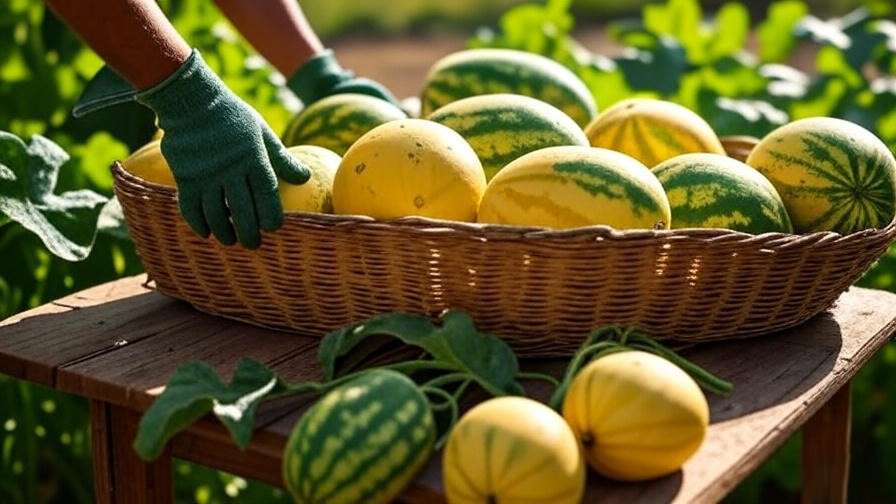
H3: Creative Uses for Yellow Watermelons
Yellow watermelons shine in both culinary and decorative roles. Their sweet, honey-like flavor pairs beautifully in smoothies, fruit salads, or grilled watermelon skewers. Try blending with mint and lime for a refreshing summer drink or freezing chunks for a vibrant sorbet. For gardeners, saving seeds is a rewarding option—scoop out seeds, rinse thoroughly, and dry them on a paper towel for 1–2 weeks before storing. Fun Fact: Yellow watermelon slices make stunning centerpieces for summer barbecues, wowing guests with their golden glow! 🎉 For a creative twist, carve hollowed melons into bowls for serving chilled desserts.
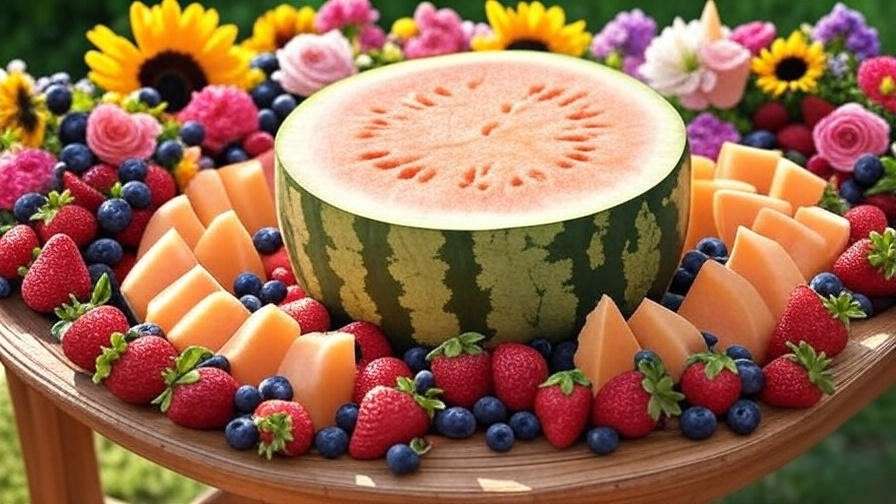
H2: FAQs About Watermelon Yellow Seeds ❓
Q1: Are yellow watermelon seeds harder to grow than regular ones?
No, yellow watermelon seeds have similar growth requirements to standard varieties. The key is providing warm soil, ample sunlight, and consistent moisture. Challenges arise from poor seed quality or improper care, not the seeds themselves.
Q2: Can I grow yellow watermelons in containers?
Yes! Compact varieties like Yellow Doll thrive in 15–20-gallon containers with good drainage. Use a trellis to support vines and ensure 6–8 hours of sunlight daily.
Q3: How do I know if my yellow watermelon is ripe?
Check for a dried tendril near the fruit, a waxy rind, and a hollow thump sound. Ripe melons also feel heavy for their size.
Q4: Are yellow watermelons genetically modified?
Most yellow watermelons are not GMOs but are bred through natural hybridization or selective breeding. Always check seed packets for GMO-free certification if this is a concern.
Q5: What’s the best fertilizer for yellow watermelon plants?
Use a balanced 10-10-10 fertilizer during early growth, switching to a 5-10-10 blend during fruiting to support melon development. Organic options like compost tea also work well.
H2: Expert Tips for Maximizing Your Watermelon Yield 🏆
To take your yellow watermelon game to the next level, try these advanced techniques:
- Prune for Productivity: Remove secondary vines to focus energy on 2–3 fruits per plant, resulting in larger, sweeter melons.
- Use Row Covers: Protect young plants from frost or pests with lightweight row covers, removing them during flowering to allow pollination.
- Conserve Water: Install drip irrigation to deliver water directly to roots, reducing waste and preventing foliar diseases.
- Quote from Expert: “Yellow watermelons are a joy to grow because they combine ease with stunning results,” says Dr. Emily Carter, a horticulturist at Texas A&M University. “With proper care, even novice gardeners can achieve impressive yields.”
Conclusion: Grow Vibrant Yellow Watermelons with Confidence! 🌈
Growing watermelon yellow seeds opens the door to a rewarding gardening experience, yielding sweet, golden melons that dazzle both the eye and palate. From choosing high-quality seeds to mastering pollination and harvest, this guide equips you with expert-backed strategies to succeed. Whether you’re cultivating in a sprawling garden or a cozy container, yellow watermelons offer beauty, flavor, and nutrition. Start your journey today, and share your success stories or vibrant melon photos on X to inspire fellow gardeners! 🌼 What’s stopping you from growing your own golden harvest?

